Find Help
More Items From Ergsy search
-
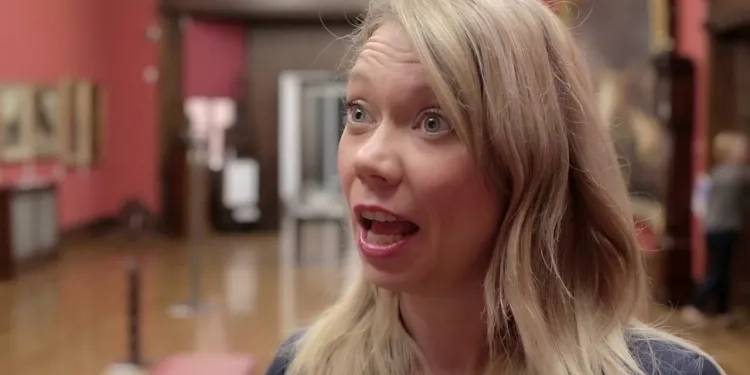
Social Prescribing
Relevance: 100%
-
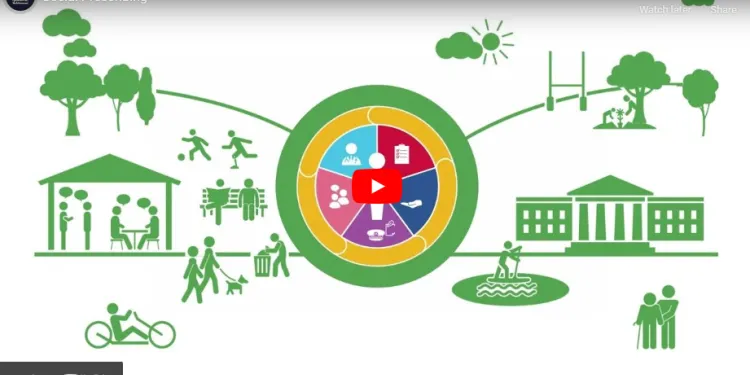
Social Prescribing
Relevance: 100%
-

What is a social prescriber?
Relevance: 94%
-
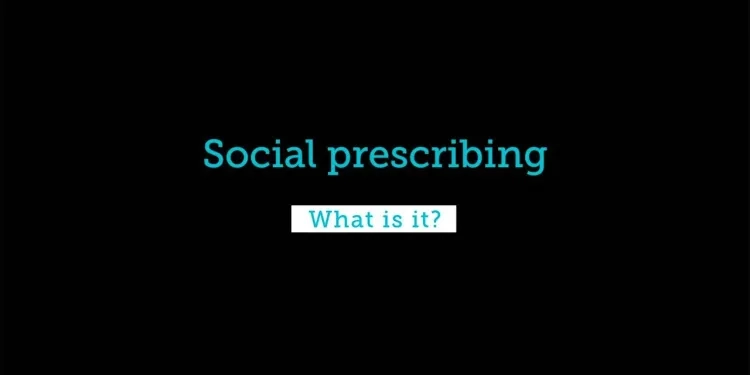
Social prescribing – what is it?
Relevance: 94%
-
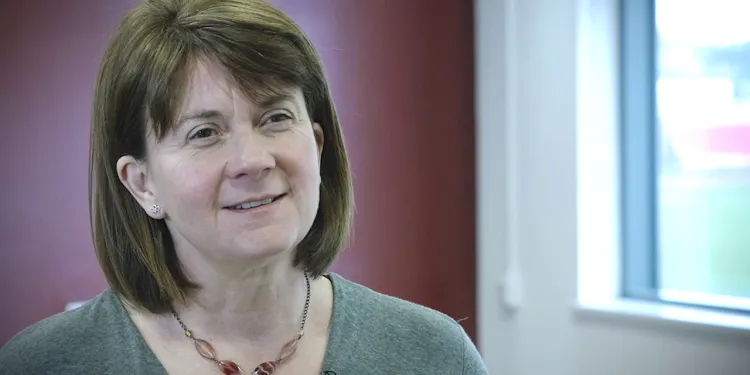
Social prescribing in practice: supporting social prescribing link workers
Relevance: 93%
-
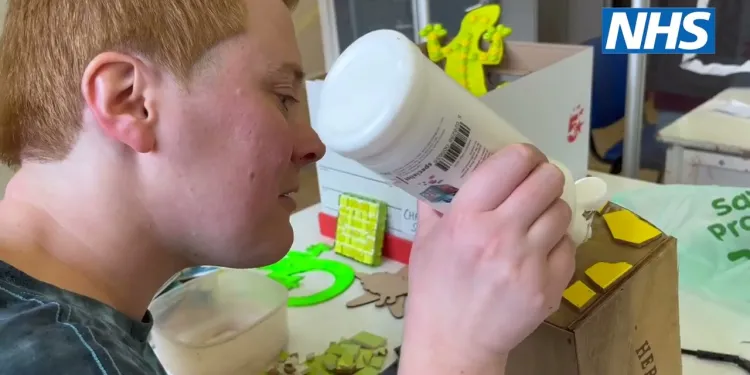
Social Prescribing in Greater Manchester
Relevance: 89%
-
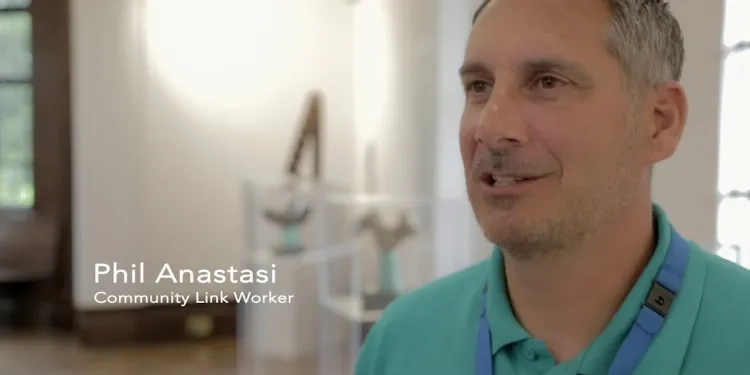
Introducing Social Prescribing - short video
Relevance: 85%
-
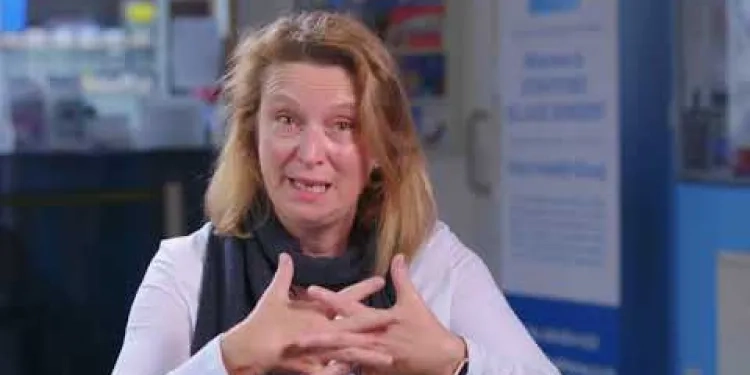
Social prescribing in south east London
Relevance: 85%
-
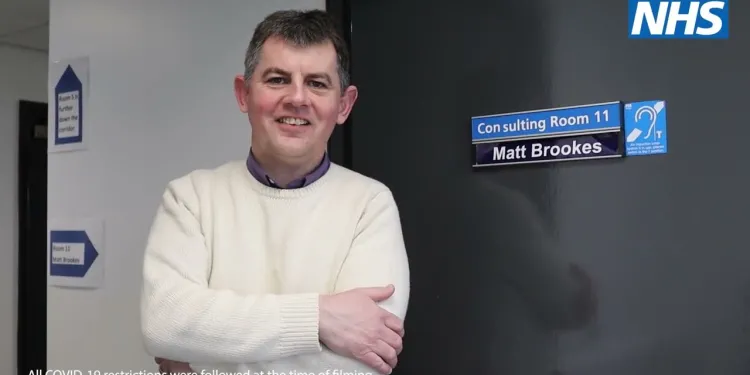
What is a social prescriber, and how do they support general practice?
Relevance: 78%
-
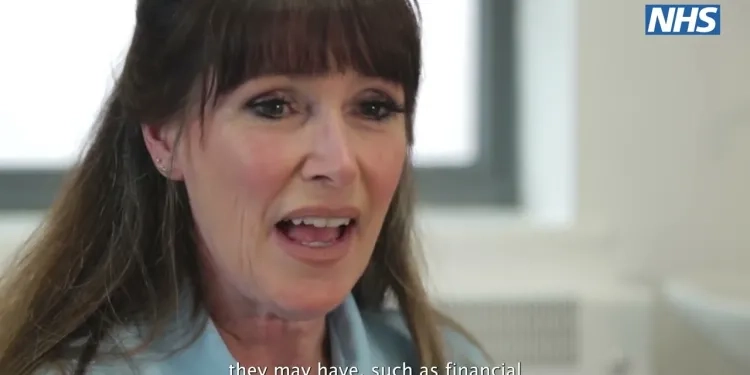
How can a Social Prescribing Link Worker help you? #MeetYourGPTeam
Relevance: 72%
-
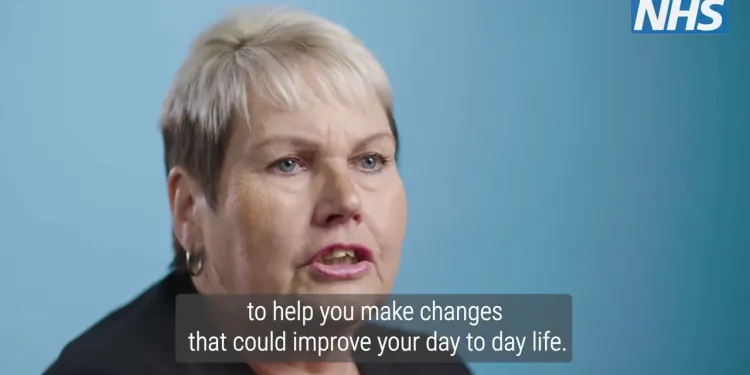
Social Prescribing Link Workers are part of new health and wellbeing services in NHS surgeries
Relevance: 69%
-

Do chiropractors prescribe medications?
Relevance: 46%
-
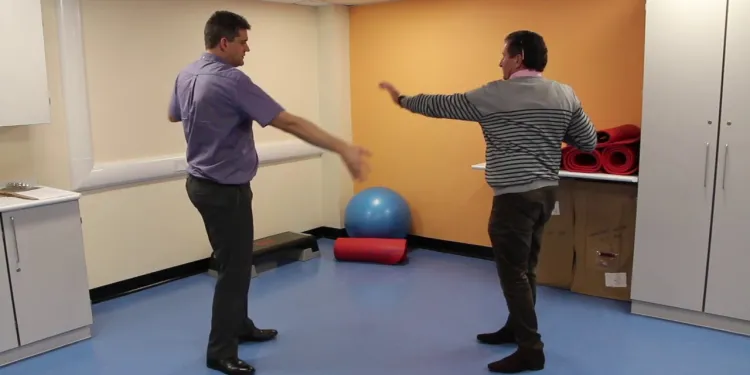
Sean's Story - There is another way. Information for prescribers
Relevance: 42%
-
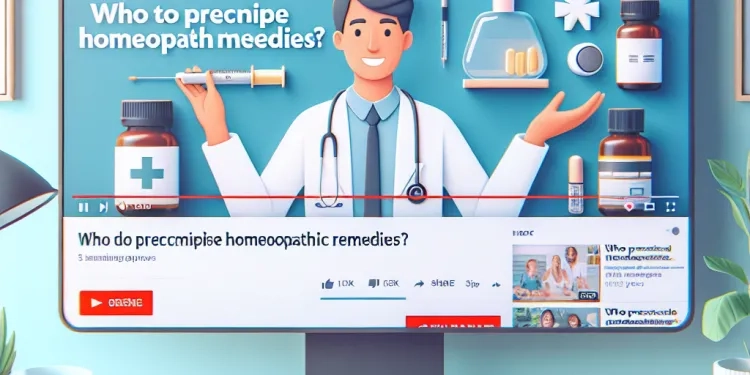
Who can prescribe homeopathic remedies?
Relevance: 42%
-

Submitted Addressing Social Inequalities: Initiatives and Challenges in the UK
Relevance: 38%
-
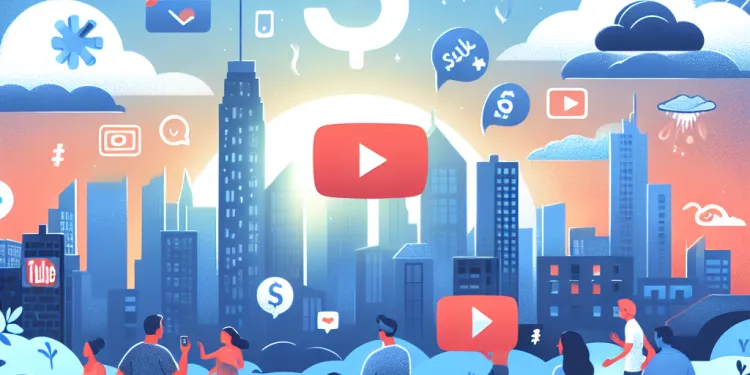
Strategies for Reducing Loneliness and Social Isolation in Urban Areas
Relevance: 36%
-
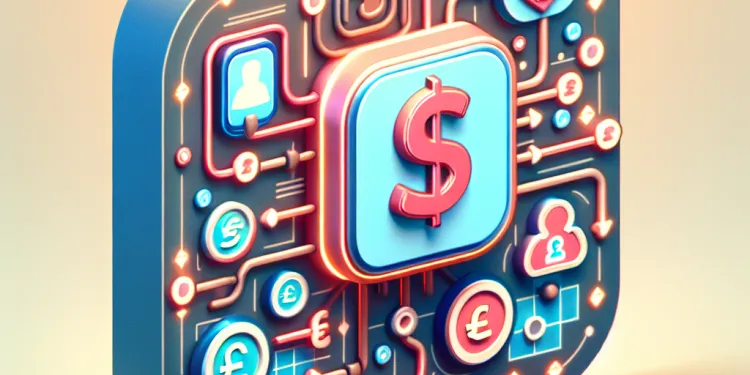
Why are there unfamiliar apps connected to my social media account?
Relevance: 36%
-
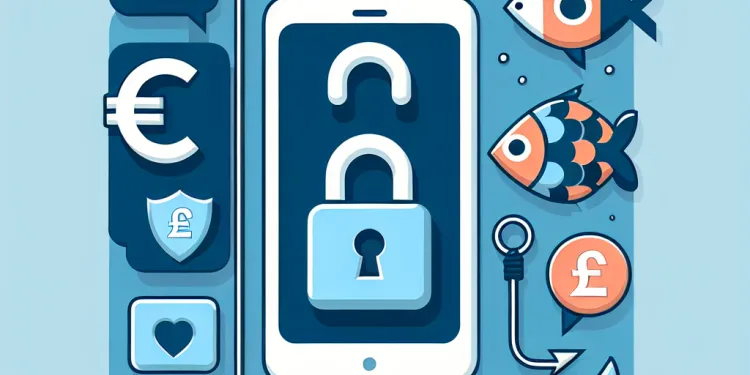
How can phishing attacks lead to social media hacks?
Relevance: 35%
-
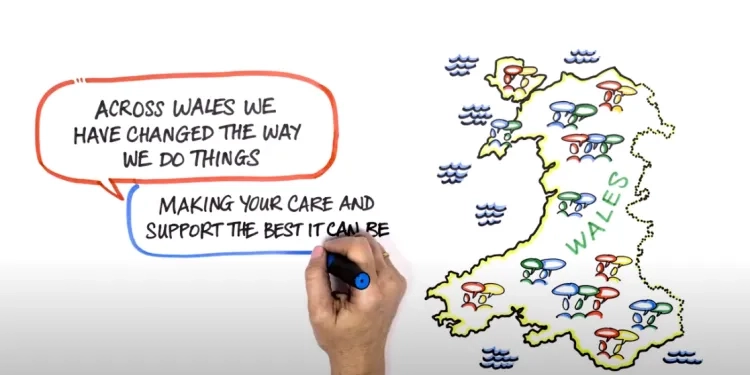
Social Services and Well-being (Wales) Act: Assessments
Relevance: 35%
-

Should I report the hack to the social media platform?
Relevance: 34%
-
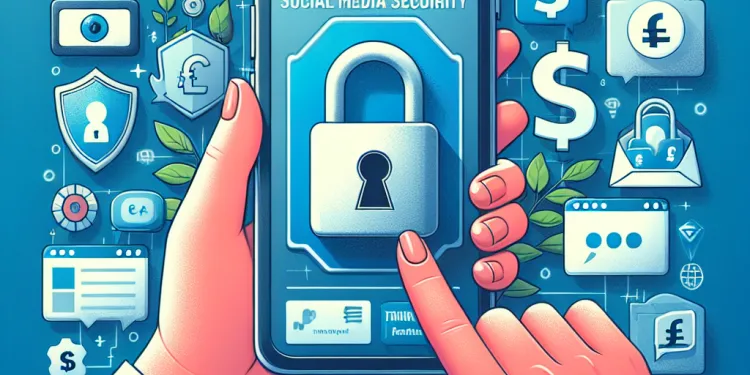
Is it possible for hackers to use my social media posts to cause harm?
Relevance: 34%
-
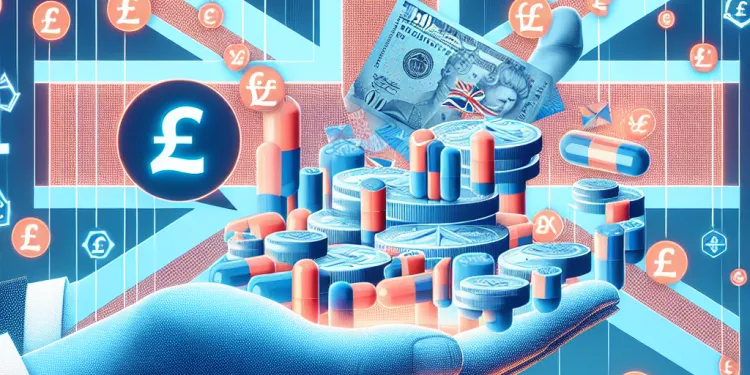
Who might be prescribed Baxdrostat?
Relevance: 34%
-
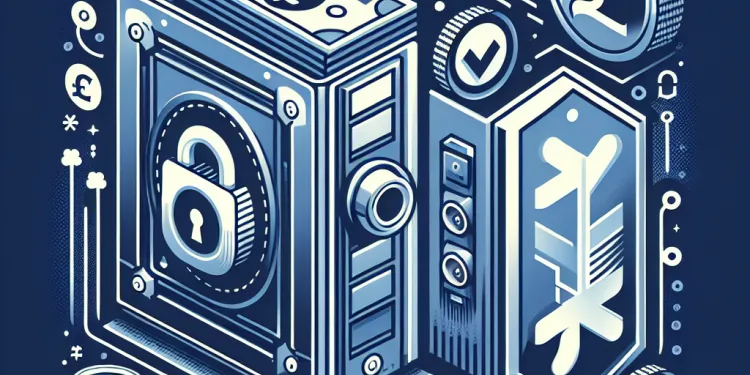
How do I know if my social media accounts have been hacked?
Relevance: 33%
-
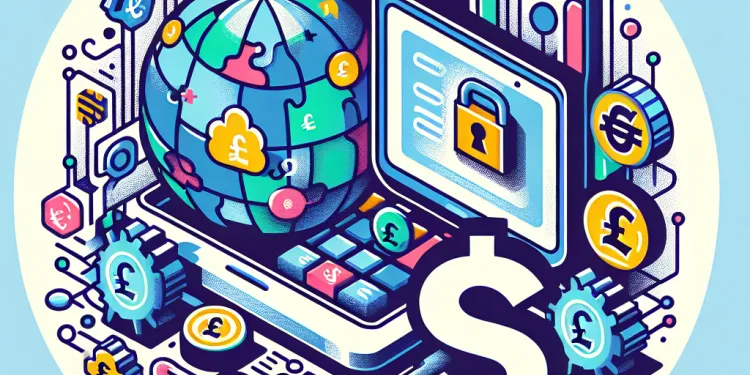
Are there any tools provided by social media platforms to increase security?
Relevance: 33%
-
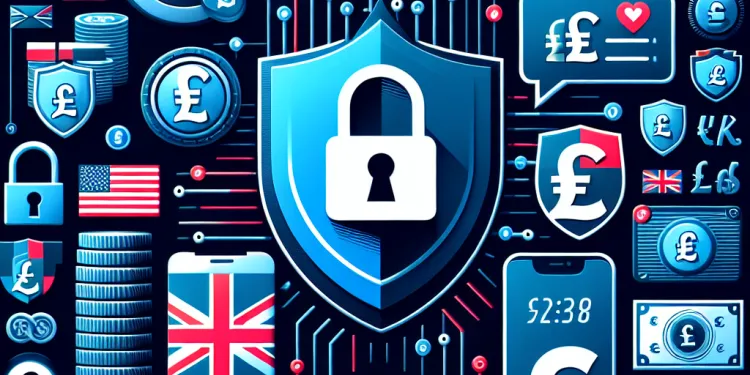
What signs indicate that my social media account might be hacked?
Relevance: 28%
-

How can I check recent login activity on my social media accounts?
Relevance: 26%
-

What type of anxiety do children and teenagers experience?
Relevance: 18%
-
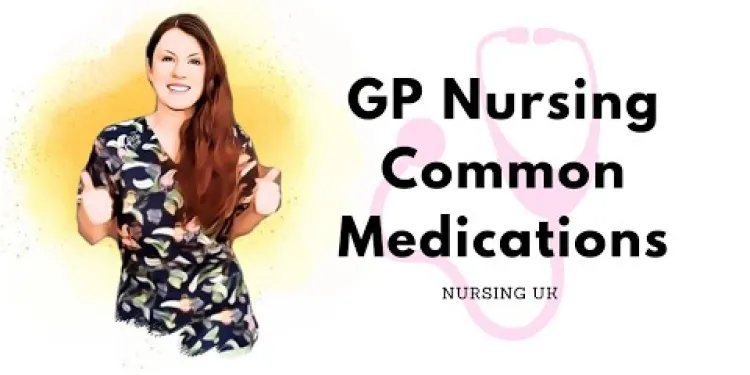
GP Nursing Most Common Medications UK.
Relevance: 15%
-
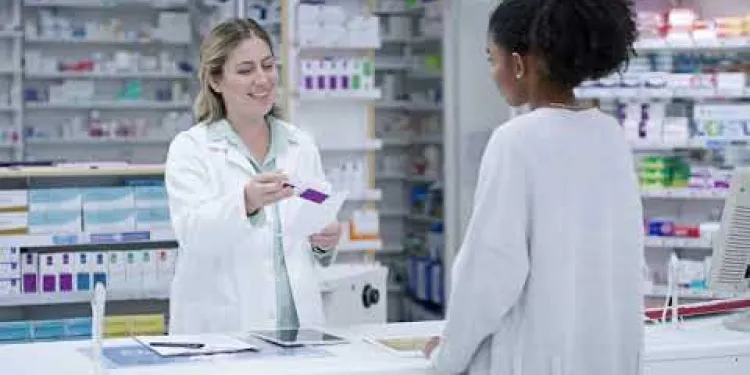
Antibiotics and You: An introduction to antibiotic resistant infections
Relevance: 15%
-
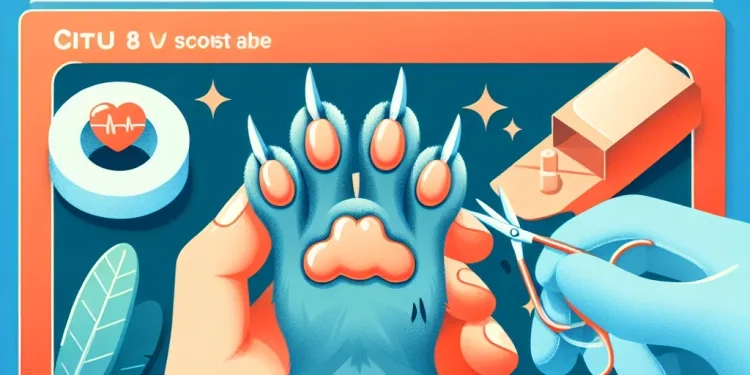
How to treat a cat bite
Relevance: 14%
-
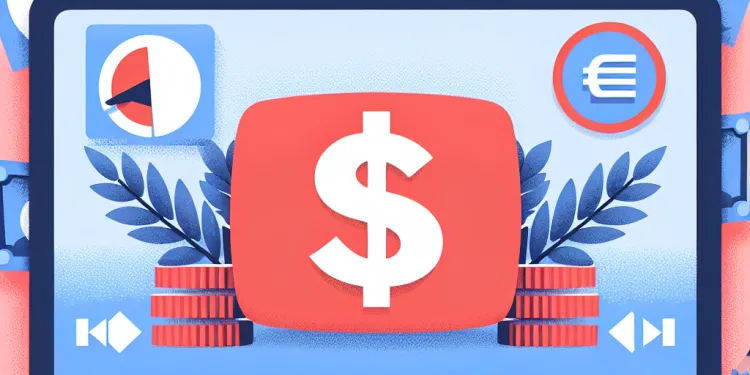
Coping with Stress and Anxiety
Relevance: 14%
-
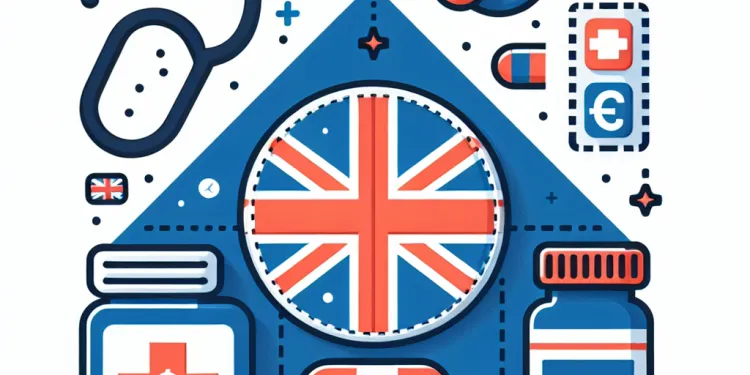
What treatments are available for shingles?
Relevance: 14%
-
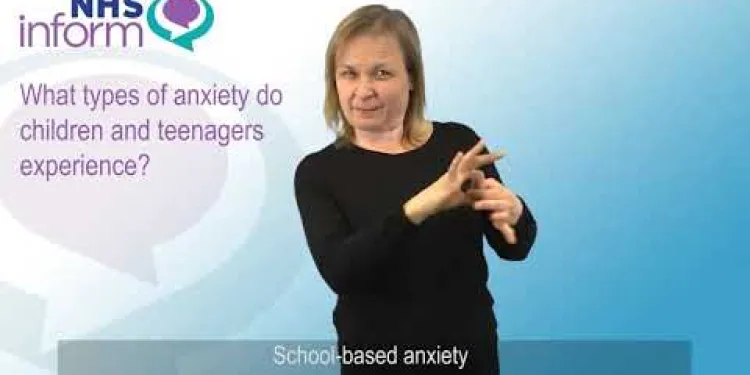
Anxiety in young people
Relevance: 13%
-
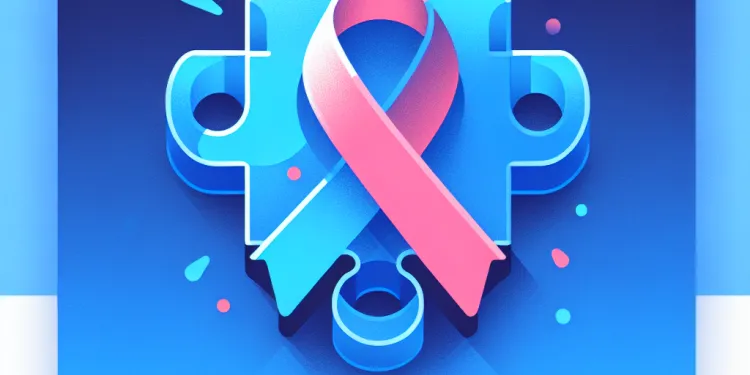
What are some common therapies for autism?
Relevance: 13%
-
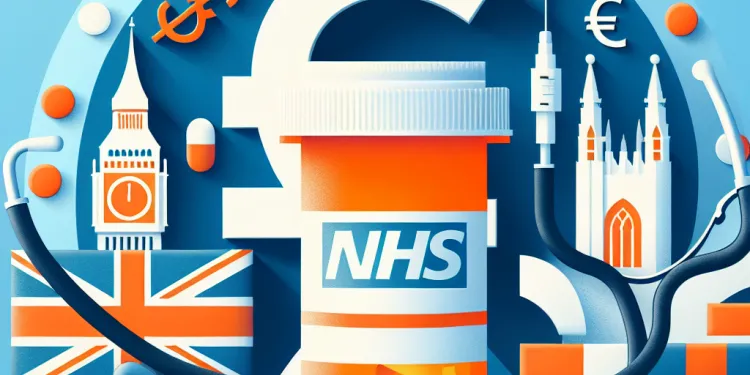
Do I need a prescription for Ozempic?
Relevance: 13%
-
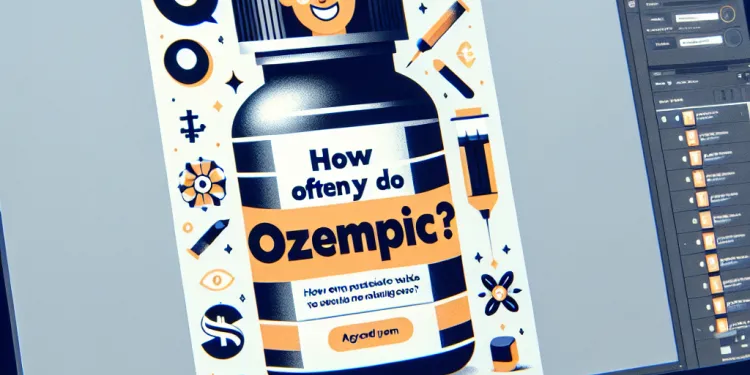
How often do you take Ozempic?
Relevance: 13%
-

BSL - Treatment of panic disorder
Relevance: 13%
-

Can Wegovy be used by children?
Relevance: 13%
-

John Wesley: Faith That Sparked the Methodist Movement | Full Movie
Relevance: 13%
-

What are the potential long-term impacts of housing benefit cuts?
Relevance: 13%
Understanding Social Prescribing
Introduction to Social Prescribing
Social Prescribing is a holistic approach to health and wellbeing that involves connecting individuals with non-medical sources of support within the community. This innovative method allows healthcare professionals, particularly General Practitioners (GPs), to refer patients to local, non-clinical services that can help address various social, emotional, and practical needs.
The Importance of Social Prescribing
In the United Kingdom, the National Health Service (NHS) has recognised the significant role that Social Prescribing can play in improving patients' overall health. Many health issues, such as anxiety, depression, and chronic loneliness, cannot be adequately addressed through medication alone. Social Prescribing provides an avenue to tackle these underlying social determinants of health, potentially reducing the strain on NHS resources by preventing or alleviating these conditions.
Types of Activities and Support
Social Prescribing can involve a wide range of activities and services, tailored to the individual's needs and interests. This can include:
- Physical activities such as walking groups, dance classes, and gym sessions
- Art and creative workshops including painting, crafting, and music therapy
- Social groups focused on common interests like book clubs or gardening
- Support with housing, employment, and financial advice
- Mental health support groups and counselling services
The Role of Link Workers
A crucial element of Social Prescribing is the role of Link Workers. These individuals work within GP practices and healthcare settings to support patients in accessing various prescribed social activities and services. Link Workers engage in meaningful conversations with patients to understand their specific needs, preferences, and aspirations, and then help them navigate and connect to suitable local resources.
The Impact on Communities
Social Prescribing has far-reaching benefits beyond individual health outcomes. It fosters a sense of community, encourages social inclusion, and can revitalise local services and community groups. By promoting active participation and strengthening social networks, Social Prescribing can enhance the overall wellbeing of communities across the UK.
Conclusion
As an approach that addresses the comprehensive needs of individuals, Social Prescribing is a promising addition to the healthcare landscape in the UK. Its ability to provide personalised, community-based support has the potential to significantly enhance the quality of life for many, while also helping to alleviate pressures on the NHS. Embracing Social Prescribing can lead to healthier, more connected communities.
Understanding Social Prescribing
Introduction to Social Prescribing
Social Prescribing is a way to help people feel better by using community support. Doctors can send people to non-medical services in their area. These services can help with social, emotional, and practical needs.
The Importance of Social Prescribing
In the United Kingdom, Social Prescribing is important for health. Many problems like feeling anxious, sad, or lonely cannot be fixed with medicine alone. Social Prescribing helps with these problems. It also helps the National Health Service (NHS) by reducing how much they need to do.
Types of Activities and Support
Social Prescribing includes different activities and services. It is made to fit what a person needs and likes. These activities can be:
- Exercise like walking groups, dancing, and going to the gym
- Creative activities like painting, crafting, and music therapy
- Social groups for hobbies like book clubs and gardening
- Help with finding a house, job, and money advice
- Support groups for mental health and counseling
The Role of Link Workers
Link Workers are important in Social Prescribing. They work in doctor’s offices to help people get to the right activities and services. Link Workers talk to people to learn what they need and like. Then, they help people find and use local resources.
The Impact on Communities
Social Prescribing helps more than just individuals. It helps build strong communities. It brings people together and supports local groups. By taking part and making friends, Social Prescribing can make communities in the UK happier and healthier.
Conclusion
Social Prescribing looks at what people need. It adds something new to healthcare in the UK. By giving support that is just right for each person, it can make life better for many. It also helps the NHS. Using Social Prescribing can lead to healthier and more connected communities.
Frequently Asked Questions
What is social prescribing?
Social prescribing is a means of enabling GPs, nurses, and other primary care professionals to refer people to a range of local, non-clinical services to support their health and wellbeing.
Who can benefit from social prescribing?
Social prescribing can benefit anyone, but it's particularly effective for people with long-term conditions, mental health issues, loneliness, or social isolation.
How does social prescribing work?
A healthcare professional refers a patient to a link worker who connects them with community groups and services tailored to their needs.
What types of activities are included in social prescribing?
Activities can include exercise classes, art groups, volunteering, gardening, and support groups.
Is social prescribing covered by the NHS?
Yes, social prescribing is part of the NHS Long Term Plan and is being rolled out across the UK.
How do I access social prescribing services?
You can access social prescribing services through your GP or healthcare provider, who will refer you to a link worker.
Are social prescribing services free?
Many social prescribing activities and services are free, but some may have a small cost associated with them. It varies depending on the service.
Can I refer myself to social prescribing?
Typically, a referral is made through a GP or other healthcare professional, but some areas may allow for self-referral.
What is a link worker?
A link worker is a professional who works within primary care to connect people to community resources and support.
How can social prescribing improve my health?
It can improve health by addressing social, emotional, and practical needs, reducing stress, increasing physical activity, and enhancing mental wellbeing.
Where are social prescribing services available?
Social prescribing services are being implemented across the UK, with availability increasing as part of the NHS Long Term Plan.
Can children and young people use social prescribing?
Yes, social prescribing can be beneficial for people of all ages, including children and young people.
Do I need a diagnosis to access social prescribing?
No, you do not need a formal diagnosis. Social prescribing can be for anyone looking to improve their overall wellbeing.
How long does it take to see benefits from social prescribing?
The time it takes to see benefits varies by individual and activity, but many people report feeling better within a few weeks to months.
How do I find out what social prescribing activities are available in my area?
Your link worker or GP can provide information on local activities, or you can check community boards and online resources for listings.
What is social prescribing?
Social prescribing is when doctors or nurses help people by suggesting non-medical activities. These activities can help people feel better.
Doctors might suggest:
- Joining a club or group.
- Doing exercises or sports.
- Taking art or music classes.
- Talking to a support group.
These activities are good for feeling happier and healthier.
If reading is hard, try these:
- Ask someone to read with you.
- Use audiobooks to listen instead of reading.
- Look for videos that explain things.
Social prescribing helps doctors and nurses send people to different local services that are not medical. These services help people feel better and stay healthy.
Who can social prescribing help?
Social prescribing can help many people. It is good for people who feel lonely, sad, or worried. It can also help people who have long-term health problems. Social prescribing can support you to feel better and enjoy life more.
Here are some ways that social prescribing can help:
- Feel less lonely: You can meet new people and make friends.
- Learn new things: Join classes or groups to learn skills.
- Get active: Do fun exercises or sports.
- Feel calm: Try activities that help you relax.
If you think social prescribing could help you, talk to a doctor or nurse. They can connect you with a friendly link worker who will help you find local activities.
Social prescribing can help anyone. But it is especially good for people who have been sick for a long time, people with mental health problems, or people who feel lonely or alone.
How does social prescribing work?
What is Social Prescribing?
Sometimes, when you feel upset or worried, a doctor can help in different ways. Social prescribing is when they help you do activities that might make you feel better.
How Does It Help?
- You can meet new people.
- You can try fun things like drawing or dancing.
- You can be more healthy and active.
Who Can Help?
Other people, like a Link Worker, can help you find activities to try. They are like a guide to show you fun and helpful things to do.
Helpful Tools:
- Use lists to remember activities you like.
- Ask someone you trust to help you go to new places.
A healthcare worker asks a link worker to help a patient. The link worker finds community groups and services that are a good fit for the patient.
What activities can you do in social prescribing?
Social prescribing means a doctor may suggest fun things you can do to feel better.
- You might join a group or class.
- You could try art, dance, or gardening.
- You may meet new friends and do activities together.
- You can get help and talk to people if you need it.
These activities can help you feel happy and healthy.
To make reading easier, you can use tools like audio books or ask someone to read with you.
You can do different fun and helpful things like:
- Join exercise classes where you move your body.
- Be part of art groups to make and enjoy art.
- Volunteer to help others and your community.
- Do gardening and grow plants.
- Join support groups to talk and get help from friends.
If it’s hard to read, using audiobooks or text-to-speech tools can help understand these ideas better.
Does the NHS pay for social prescribing?
The NHS may help with social prescribing. This means they might pay for it. Social prescribing helps people feel better by doing fun and helpful activities, like joining a club or talking to a group.
You can ask your doctor or nurse for more information. They can tell you if the NHS will pay for social prescribing for you.
It can be helpful to use pictures or videos to understand more about social prescribing. You can also ask someone you trust to explain it to you.
Yes, social prescribing is part of the NHS Plan. It is being used all over the UK.
How can I use social prescribing services?
Social prescribing helps you find support in your community. This might be a club, group, or activity that helps you feel better.
Here is how you can use it:
- Talk to your doctor or healthcare worker. Tell them you want help from social prescribing.
- They will introduce you to a link worker. A link worker is someone who knows all about local activities and support.
- Meet with the link worker. Tell them what you like and need.
- The link worker will help you find what is right for you. This could be a group or activity near you.
If you need more help, ask a family member, carer, or friend to go with you.
You can get help from social prescribing services by talking to your doctor. They will connect you to a helpful person called a link worker.
Do social prescribing services cost money?
Social prescribing services are free. This means you do not have to pay for them.
These services help people feel better by connecting them with activities and support in their community. This can include exercise groups, art classes, or talking to someone who can help.
If you are unsure about social prescribing, you can ask a doctor or nurse. They can give you more information.
Some tools can help you understand better:
- Read with a friend or family member.
- Use pictures to help you remember.
- Take breaks if you need to.
Most social prescribing activities and services don't cost money. Some might have a small fee. It depends on the service.
Can I choose to get social prescribing help myself?
Usually, a doctor or healthcare worker will send you to see a specialist. But in some places, you can ask on your own without a doctor.
What is a link worker?
A link worker is a person who helps people. They can help you find support and services. If you need help, they can show you where to get it. Link workers help you with many things like health, money, and feeling happy.
Sometimes, you may need help to talk to people. A link worker is a good friend in this. They listen to you and help you understand what to do next.
To make things easier, you can use pictures and simple words. It can help you remember things. You can also ask someone you trust to help you read.
A link worker is a person who helps connect people with local help and resources in their community. They work with doctors and nurses to support people.
How can social prescribing help me feel better?
It can help you be healthier. It can help you feel better and do things that make you happy. It can also help you move more and feel less worried.
Where can you find social prescribing services?
Social prescribing services help people feel better by connecting them to activities and support in their community. They can be found in many places, like:
- Doctor’s offices
- Community centers
- Local charities
If you want help finding these services, you can:
- Ask your doctor
- Visit a local community center
- Contact local health organizations
Doctors in the UK are trying new ways to help people feel better. This is called social prescribing. It is becoming more common because of a new plan by the NHS, the group that looks after health care in the UK.
Can kids and teenagers use social prescribing?
Social prescribing is a way to help people feel better by doing fun activities. Kids and teenagers can use social prescribing too.
Instead of just taking medicine, they might join a club, play a sport, or learn something new. This can help them make friends and feel happy.
If you want to try social prescribing, talk to a teacher, doctor, or a family member. They can help you get started.
Using pictures, lists, or talking to someone you trust can also make it easier to understand and try social prescribing.
Yes, "social prescribing" can help people of all ages. This includes children and young people.
Do I need a doctor's note to get social prescribing?
No, you don't need a doctor's note! You can still get social prescribing if you need help.
What is social prescribing?
Social prescribing is about getting help from your community. It could be joining groups, meeting people, or getting advice. It helps you feel better.
If you find reading hard, you can:
- Ask someone to read it with you.
- Use a screen reader that reads words out loud.
Remember, it's okay to ask for help!
No, you don't need a doctor to say what's wrong. Social prescribing is for anyone who wants to feel better.
How long before social prescribing helps you?
Social prescribing can help you feel better. It can take time to see changes. Some people feel better fast. It might take a few weeks or months for others.
If you do not see changes right away, do not worry. Everyone is different.
Talking with your support person can help. They can listen to you and give advice.
Using a calendar might help you keep track of your progress.
How long it takes to feel good can be different for everyone. But lots of people say they feel better after a few weeks or months.
Here are some things that might help:
- Keep a simple diary to track how you feel each day.
- Set small goals to see changes over time.
- Ask someone you trust for help.
How can I find social prescribing activities near me?
You can find social prescribing activities by doing these things:
- Ask your doctor for help. They might know fun activities for you.
- Visit the local library. They often have information on nearby activities.
- Use the internet. Go online and search for "social prescribing activities near me."
You can also ask a friend or family member to help you look for activities.
Your helper at the doctor's office can tell you about fun things to do nearby. You can also ask your doctor. Look at community boards or on the internet to find more ideas.
Useful Links
Useful links from: Strategies for Reducing Loneliness and Social Isolation in Urban Areas
- NHS - Loneliness in older people The NHS provides information on how loneliness can affect older people and offers strategies and advice on reducing social isolation, including physical activity and community engagement.
- Age UK - Tackling Loneliness Age UK offers resources and support for older individuals experiencing loneliness and social isolation. The website provides practical advice, volunteer opportunities, and connection services.
- Campaign to End Loneliness The Campaign to End Loneliness works to ensure that loneliness is acted upon as a public health priority. The site offers research, tools, and blogs on strategies to combat loneliness in communities.
- Mind - Loneliness Mind, a UK-based mental health charity, provides information on the impact of loneliness on mental health and offers advice on how to manage feelings of isolation through various coping strategies and support networks.
Useful links from: Social prescribing in practice: supporting social prescribing link workers
- NHS Social Prescribing This NHS page provides comprehensive information on social prescribing, including how it works, its benefits, and resources for link workers.
- Social Prescribing Network The Social Prescribing Network promotes best practices and offers resources for practitioners, including events, research findings, and a newsletter.
- Royal Voluntary Service - Social Prescribing Royal Voluntary Service provides information on their social prescribing services and how they support individuals in connecting with local activities and services.
- National Academy for Social Prescribing This organization offers extensive resources, training, and support for social prescribing link workers, including partnerships and funding opportunities.
Useful links from: Introducing Social Prescribing - short video
- NHS England - Social Prescribing An overview of social prescribing in the NHS, explaining how it works and its benefits to patients and community health.
- The King's Fund - What is social prescribing? Detailed information from The King's Fund about what social prescribing is, including research, case studies, and best practices.
- Social Prescribing Network A resource site for the Social Prescribing Network, which connects individuals and organizations involved in social prescribing across the UK.
- National Academy for Social Prescribing An organization dedicated to advancing social prescribing through research, collaboration, and sharing best practices across the UK.
Useful links from: Social Prescribing
- NHS - Social Prescribing Learn about social prescribing on the NHS website. This page explains what social prescribing is, how it works, and its benefits in supporting health and well-being.
- The King's Fund - Social Prescribing Explore detailed insights and research on social prescribing from The King's Fund, an independent charity working to improve health and care in England.
- National Academy for Social Prescribing Visit the National Academy for Social Prescribing to find resources, news, and information on social prescribing initiatives across the UK.
- Mind - Social Prescribing Mind, a UK-based mental health charity, provides valuable information about social prescribing, its benefits, and how it can help improve mental health and well-being.
Useful links from: What is a social prescriber?
- NHS - Social Prescribing This page on the NHS website provides an overview of social prescribing, explaining what it is, how it works, and the benefits it can bring to individuals and communities.
- National Academy for Social Prescribing The National Academy for Social Prescribing supports the advancement of social prescribing through various initiatives, resources, and partnerships across the UK.
- Mind - Social Prescribing Mind, the UK mental health charity, provides information on social prescribing, how it can help mental health, and offers resources for those looking to get involved.
- The King's Fund - Social Prescribing The King’s Fund is a health and care charity that provides insights and research on social prescribing, including its impact, potential challenges, and future development in the UK's healthcare system.
Useful links from: Social Prescribing in Greater Manchester
- NHS Social Prescribing Information on social prescribing from the NHS England website, including how it works and its benefits.
- Greater Manchester Health and Social Care Partnership Details about social prescribing initiatives and support in Greater Manchester, provided by the Greater Manchester Health and Social Care Partnership.
- RHS Bridgewater Social Prescribing Information about social prescribing initiatives at RHS Garden Bridgewater, including activities focused on improving mental health and wellbeing through gardening.
- The King's Fund - Social Prescribing An overview of social prescribing from The King's Fund, providing research, policy analysis, and case studies.
Useful links from: What is a social prescriber, and how do they support general practice?
- NHS - Social Prescribing This page on the NHS website explains what social prescribing is and how it links patients to non-medical support in the community. It also describes the benefits for general practice and patient outcomes.
- National Academy for Social Prescribing The National Academy for Social Prescribing provides detailed information on what social prescribing is, how it works, and the impact it has on communities and general practices in the UK.
- Royal College of General Practitioners - Social Prescribing This page by the Royal College of General Practitioners outlines how social prescribing can support general practice, improve patient care, and addresses frequently asked questions.
- The King's Fund - What is Social Prescribing? The King's Fund provides an overview of social prescribing, its role in the healthcare system, how it supports general practitioners, and its impact on patients' mental and physical health.
Useful links from: Social prescribing – what is it?
- NHS England - Social prescribing Information from NHS England on social prescribing, including what it is, how it works, and its benefits for patients.
- National Academy for Social Prescribing The National Academy for Social Prescribing is a UK-based charity that promotes social prescribing and supports community organizations through research, advocacy, and partnerships.
- Mind - Social prescribing and community-based support Mind is a UK charity that provides comprehensive information on social prescribing and how it can help improve mental health by connecting individuals to community-based support.
- NHS Inform - Social prescribing NHS Inform offers detailed insight about social prescribing, focusing on how it can be used to improve health and wellbeing through various community services and activities.
Useful links from: Social Prescribing Link Workers are part of new health and wellbeing services in NHS surgeries
- NHS England - Social Prescribing Information about social prescribing, how it works, and the benefits for patients and healthcare services on the NHS England website.
- National Academy for Social Prescribing Home of the National Academy for Social Prescribing, supporting the implementation and success of social prescribing across the UK.
- The King's Fund - Social Prescribing The King's Fund provides in-depth research and analysis on the effectiveness and implementation of social prescribing in healthcare.
- Social Prescribing Network A UK-wide network that brings together people and organizations involved in social prescribing to share knowledge and best practices.
- Ergsy carfully checks the information in the videos we provide here.
- Videos shown by Youtube after a video has completed, have NOT been reviewed by ERGSY.
- To view, click the arrow in centre of video.
- Most of the videos you find here will have subtitles and/or closed captions available.
- You may need to turn these on, and choose your preferred language.
- Go to the video you'd like to watch.
- If closed captions (CC) are available, settings will be visible on the bottom right of the video player.
- To turn on Captions, click settings .
- To turn off Captions, click settings again.
More Items From Ergsy search
-

Social Prescribing
Relevance: 100%
-

Social Prescribing
Relevance: 100%
-

What is a social prescriber?
Relevance: 94%
-

Social prescribing – what is it?
Relevance: 94%
-

Social prescribing in practice: supporting social prescribing link workers
Relevance: 93%
-

Social Prescribing in Greater Manchester
Relevance: 89%
-

Introducing Social Prescribing - short video
Relevance: 85%
-

Social prescribing in south east London
Relevance: 85%
-

What is a social prescriber, and how do they support general practice?
Relevance: 78%
-

How can a Social Prescribing Link Worker help you? #MeetYourGPTeam
Relevance: 72%
-

Social Prescribing Link Workers are part of new health and wellbeing services in NHS surgeries
Relevance: 69%
-

Do chiropractors prescribe medications?
Relevance: 46%
-

Sean's Story - There is another way. Information for prescribers
Relevance: 42%
-

Who can prescribe homeopathic remedies?
Relevance: 42%
-

Submitted Addressing Social Inequalities: Initiatives and Challenges in the UK
Relevance: 38%
-

Strategies for Reducing Loneliness and Social Isolation in Urban Areas
Relevance: 36%
-

Why are there unfamiliar apps connected to my social media account?
Relevance: 36%
-

How can phishing attacks lead to social media hacks?
Relevance: 35%
-

Social Services and Well-being (Wales) Act: Assessments
Relevance: 35%
-

Should I report the hack to the social media platform?
Relevance: 34%
-

Is it possible for hackers to use my social media posts to cause harm?
Relevance: 34%
-

Who might be prescribed Baxdrostat?
Relevance: 34%
-

How do I know if my social media accounts have been hacked?
Relevance: 33%
-

Are there any tools provided by social media platforms to increase security?
Relevance: 33%
-

What signs indicate that my social media account might be hacked?
Relevance: 28%
-

How can I check recent login activity on my social media accounts?
Relevance: 26%
-

What type of anxiety do children and teenagers experience?
Relevance: 18%
-

GP Nursing Most Common Medications UK.
Relevance: 15%
-

Antibiotics and You: An introduction to antibiotic resistant infections
Relevance: 15%
-

How to treat a cat bite
Relevance: 14%
-

Coping with Stress and Anxiety
Relevance: 14%
-

What treatments are available for shingles?
Relevance: 14%
-

Anxiety in young people
Relevance: 13%
-

What are some common therapies for autism?
Relevance: 13%
-

Do I need a prescription for Ozempic?
Relevance: 13%
-

How often do you take Ozempic?
Relevance: 13%
-

BSL - Treatment of panic disorder
Relevance: 13%
-

Can Wegovy be used by children?
Relevance: 13%
-

John Wesley: Faith That Sparked the Methodist Movement | Full Movie
Relevance: 13%
-

What are the potential long-term impacts of housing benefit cuts?
Relevance: 13%